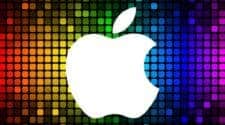Now that Apple has commenced incorporating its M3 generation of chips into its laptops, it’s a fitting time to reassess the best MacBook options for purchase in 2024. However, determining the ideal choice isn’t always straightforward. Apple offers various performance tiers and sizes, adding complexity to the decision-making process.
Moreover, you still have the option to acquire M1 and M2 MacBooks, both from Apple’s official website and third-party retailers. For instance, while the MacBook Pro features the M3 series, the MacBook Air has yet to adopt this upgrade. Nevertheless, if you can exercise patience for the anticipated release of the M3 MacBook Air in early 2024, it is advisable to do so, and we’ll elaborate on the reasons shortly.
If you find yourself contemplating a MacBook purchase without a clear idea of which model to choose, perusing our guide can prove beneficial. It will assist you in streamlining your options, ensuring a satisfactory outcome with your chosen purchase.
Best MacBooks to buy in 2024
The 13-inch MacBook Air (M2): A MacBook Catering to All
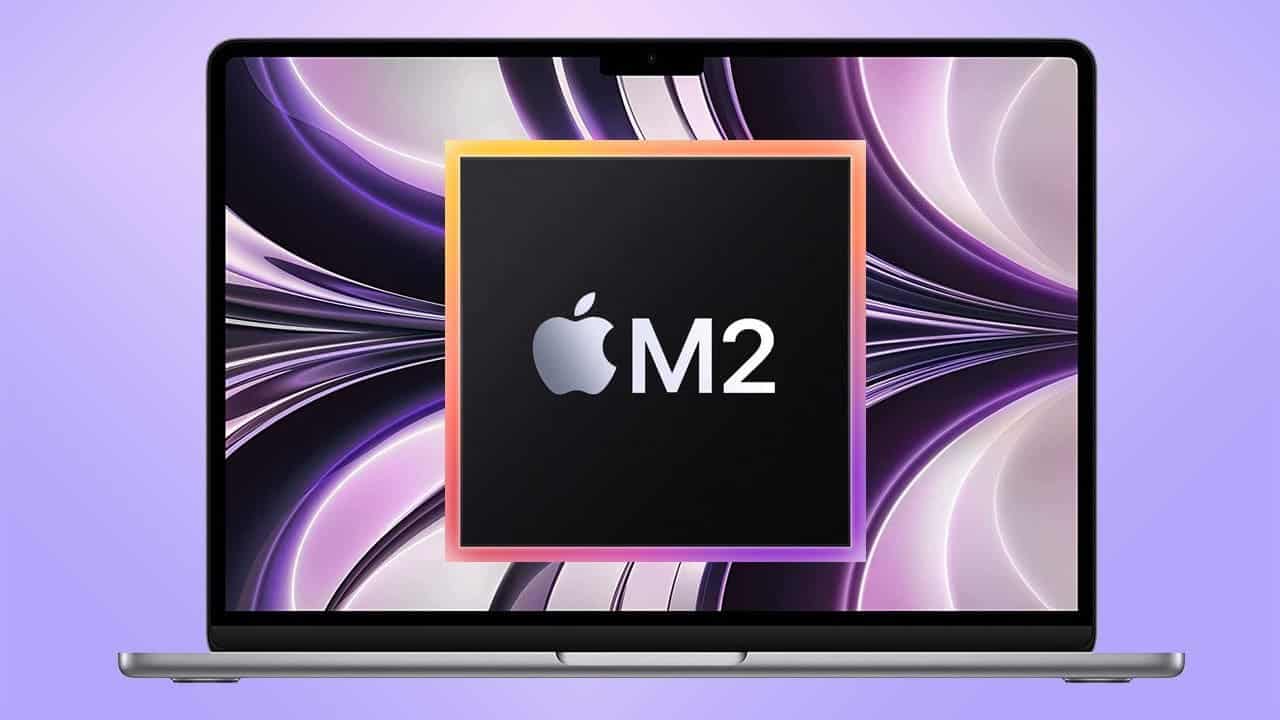
Undergoing a comprehensive redesign, the 13-inch MacBook Air M2 bears a striking resemblance to the MacBook Pro, forsaking the traditional taper of the original MacBook Air for a consistent thickness. Despite an increased battery capacity, it now boasts a thinner back and is 0.1 pounds lighter at 2.7 pounds. Retaining the fanless design that distinguishes the MacBook Air, it remarkably maintains cool temperatures even during typical workloads.
Positioned as an excellent budget option, the MacBook Air M2 is an enticing choice for those transitioning to Apple silicon or opting for a Mac for general on-the-go computing. Its compact and lightweight build allows it to seamlessly fit into a tech bag. Making it a portable companion throughout the day. The 500-nit Liquid Retina display, suitable for various environments, and its impressive battery life, lasting up to 18 hours during video playback with the Apple TV app, contribute to its appeal. Apple supplies a 30-watt USB-C charger (35-watt with the M2 10-core, 512GB storage model), but it is compatible with Apple’s 67-watt USB-C power adapter.
The 2022 Apple MacBook Air introduces a larger screen size, featuring a thinner top bezel with a webcam notch, resulting in a display increase of just over a quarter-inch to 13.6 inches diagonally. Although seemingly a subtle change, it becomes noticeable when the screen is in use. While the slimmer bezel is welcomed, the presence of the notch has sparked some controversy. Notably, both 2023 MacBook Pro models also incorporate notches, indicating a potential trend.
In terms of aesthetics, the MacBook Air M2 offers two new color options: Midnight and Starlight. Starlight presents a pale gold tone without the pink tint of the previous gold generation, while Midnight boasts a nearly black hue with a hint of purplish-blue under specific lighting conditions.
The new MacBook Air M2 allows for configurations with up to 24GB of memory, a 50% increase compared to the older model, enhancing multitasking efficiency and speed.
A significant highlight of the 2022 MacBook Air is the M2 processor, delivering an 18% improvement in CPU performance and a substantial 35% increase in GPU performance. The GPU boost, while consuming slightly more power, does not extend the battery life beyond the M1 model due to the larger-capacity battery. Overall, this constitutes a substantial upgrade, positioning the MacBook Air M2 as an optimal choice for a budget-friendly MacBook.
It’s worth noting that the anticipation for the M3 chip‘s arrival in the MacBook Air in early 2024 may lead some to consider waiting for this enhanced version. Already featured in the MacBook Pro, the M3 chip promises an even more significant improvement than the leap from M1 to M2.
MacBook Pro 14-inch (M3 Max): Elevating Performance with M3 Power
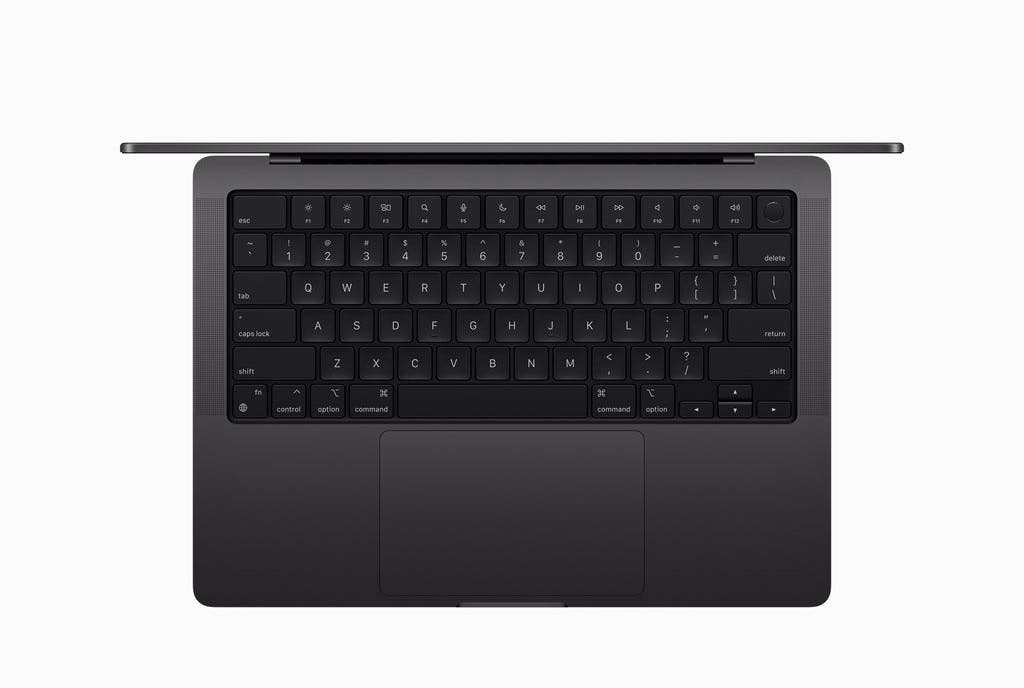
The anticipation surrounding the arrival of the M3 series of chips has proven well-founded, and with their debut, the MacBook Pro 14-inch experiences a substantial performance enhancement. While not flawless, these chips contribute significantly to the MacBook Pro’s overall capabilities.
A notable portion of this improvement revolves around graphics performance. In tests, the 14-inch MacBook Pro equipped with the M3 Max chip demonstrated a 13% increase in Cinebench R24’s single-core test compared to the M2 Max, and a notable 32% improvement in the multi-core test. In HandBrake, the difference expanded to 38%.
While these gains may not be revolutionary, the true strides become evident in GPU performance. The M3 Max showcased a remarkable 56% boost in performance over the M2 Max in Cinebench R24’s graphics test. Whether it’s exporting videos or engaging in 3D rendering, the overall experience feels noticeably more responsive and efficient. For those involved in graphics-intensive tasks seeking a chip capable of handling diverse demands, the 14-inch MacBook Pro emerges as a compelling choice.
This elevated performance extends to gaming as well. The M3 Max performs exceptionally, surpassing every RTX 4070 laptop chip reviewed so far. This level of gaming prowess would have been unimaginable just a few years ago. Positioning the 14-inch MacBook Pro as a serious contender in the gaming arena.
When combining this processing power with the stunning mini-LED display featuring a 120Hz refresh rate, the MacBook Pro 14-inch becomes a dream for gamers. The device further impresses with its top-tier speakers, unrivaled by any other laptop, and a comfortable keyboard.
However, it’s crucial to note that while the M3 Max stands out, prospective buyers may want to reconsider opting for the M3 Pro version of this MacBook Pro. The default configuration comes with 8GB of memory, which falls short for a professional-grade laptop. Additionally, the memory bandwidth is reduced compared to the M2 Pro. Investing a bit more in the M3 Max version is recommended, ensuring you acquire the ultimate MacBook that money can buy.
MacBook Air 15-inch (M2): Elevating the MacBook Air Experience with More Screen Real Estate
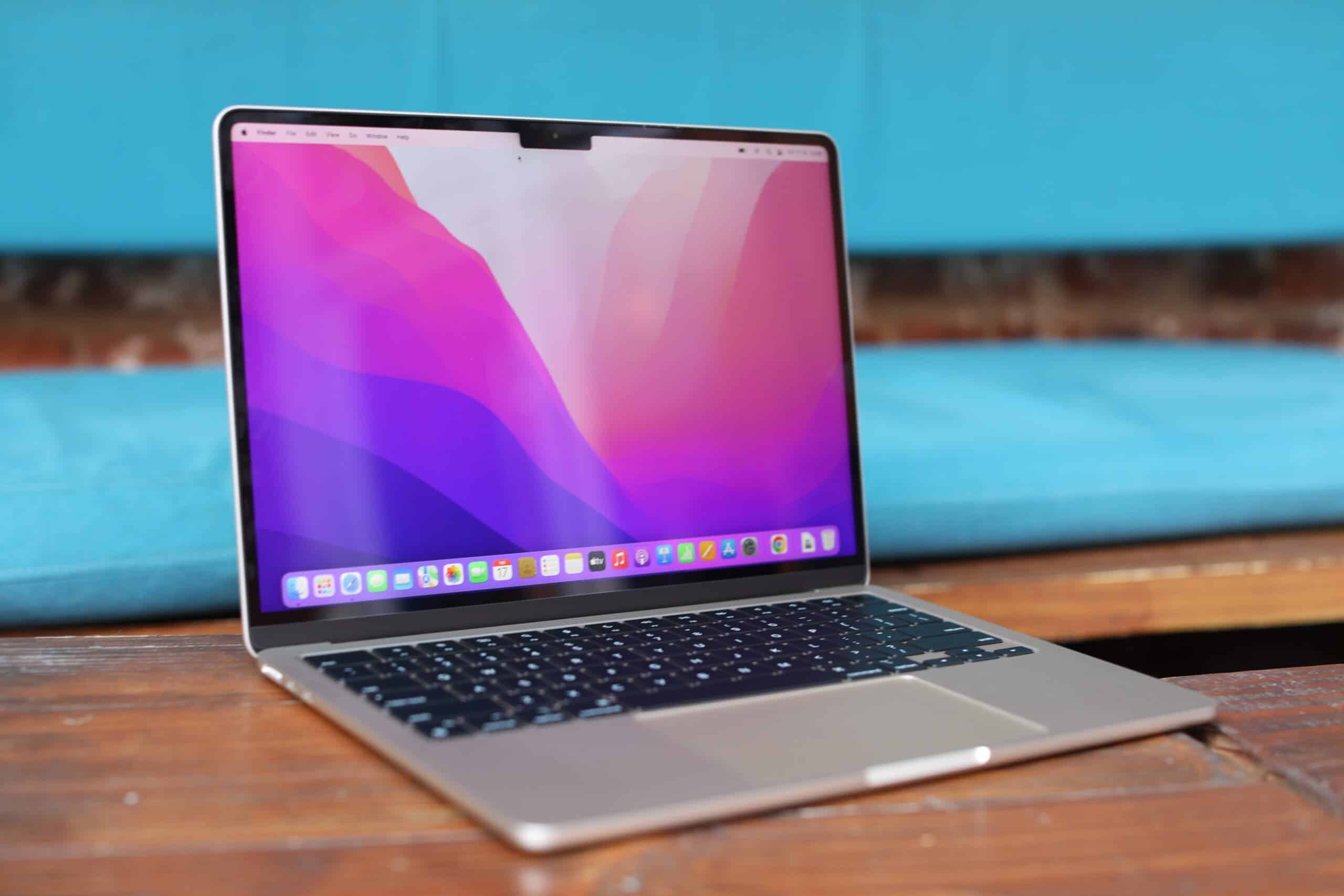
After years of offering the MacBook Air in a single size, Apple shook things up in 2023 by introducing a 15-inch model. Tailored for a specific user demographic—those seeking the lightweight and quiet attributes of the MacBook Air without the robust power of the MacBook Pro—it proves to be a fantastic option for its target audience.
Retaining many familiar features from its 13-inch counterpart, including a slender chassis, enduring battery life, and exceptional speakers, the 15-inch MacBook Air is ideal for individuals prioritizing portability. However, its appeal extends to those who prioritize additional screen space.
The display is undoubtedly a standout feature, boasting brightness and aesthetics. With Apple’s Liquid Retina display delivering 500 nits of peak brightness and covering 90% of the Adobe RGB color gamut, it excels in color-accurate work, earning praise as one of the finest IPS laptop displays available.
Under the hood, the 15-inch MacBook Air houses Apple’s M2 chip. Inheriting improvements from the M1 series present in the previous generation of MacBook Air. While not setting performance records, the M2 chip proves to be a reliable performer for its price. Notably, its efficiency is where it shines, enabling the 15-inch MacBook Air to surpass Apple’s claimed 18 hours by lasting almost 19 hours in testing.
Granted, the expanded screen size slightly diminishes the MacBook Air’s portability. However, for users seeking a larger MacBook Air while retaining the beloved features of Apple‘s lightweight laptops, the 15-inch model stands as an excellent choice.
MacBook Air 13-inch (M1): An Optimal Choice for Budget-Conscious Buyers
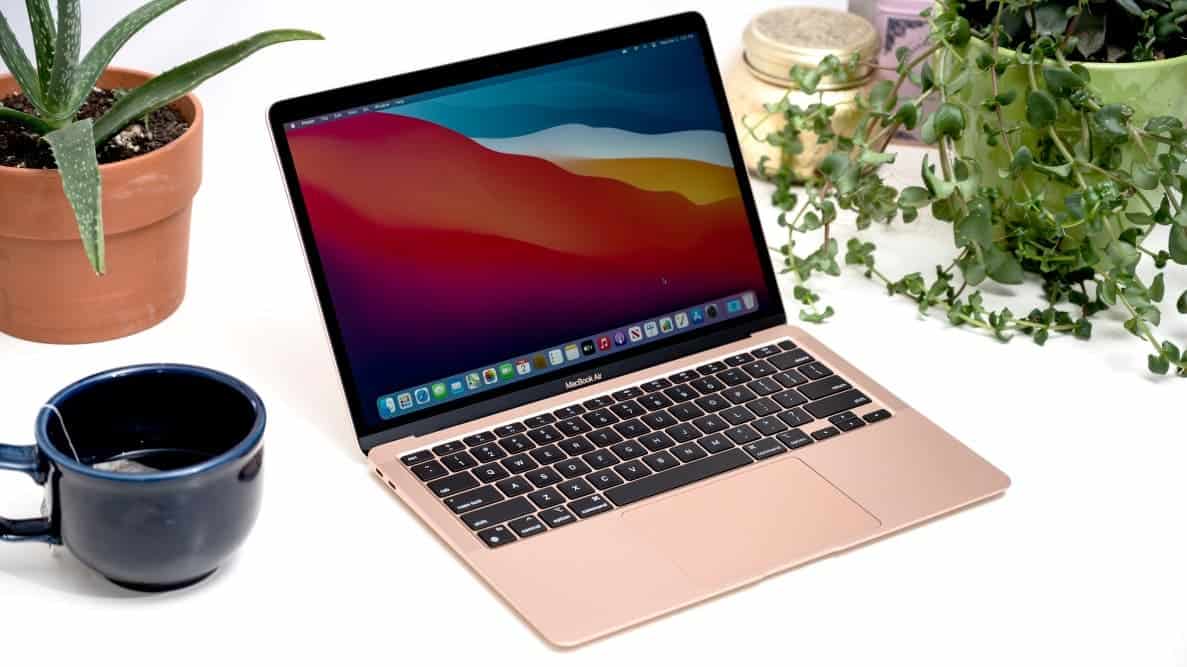
Despite the introduction of the M2 chip in the MacBook Air and the impending launch of the M3 MacBook Air, Apple continues to make the MacBook Air with the M1 chip available. The crucial question then becomes whether it’s a worthwhile purchase.
The decision largely hinges on the price at which you can acquire it. If you can secure it for $700 or less, it represents a phenomenal bargain. However, if the prices exceed that threshold, opting for the M2 version would be a more prudent choice.
Why, you may wonder? Apple is merely charging an additional $100 for the M2 MacBook Air compared to the M1 model. In return, you gain benefits such as thinner bezels, the MagSafe 3 port, a sleeker design, enhanced speakers, an improved webcam, and updated wireless connectivity. These additions translate to a considerable value boost for your investment.
This isn’t to say that the M1 MacBook Air is subpar—it remains a commendable option even today. Three years post-launch, it stands as a robust device, offering ample power for the majority of users. Its efficiency is underscored by the absence of a fan, ensuring a silent working environment.
In essence, the M1 MacBook Air has several merits. The suggestion is to capitalize on its strengths by waiting for a sale before making the purchase. Maximizing the value proposition.
Which MacBook is the best choice for you?
At present, our top recommendation is the 14-inch MacBook Pro, particularly if you require robust performance, intend to engage in resource-intensive tasks, or simply seek a device with more power than the standard MacBook Air. Despite its higher price, the stunning mini-LED display, potent M3-series chips, and exceptional build quality make it a worthwhile investment.
The M2 MacBook Air is a close second, offering powerful performance at a more affordable price compared to the M3 Max MacBook Pro. While an M3 chip version is anticipated later in the year, the current M2 model stands as a strong contender.
Considering the 15-inch MacBook Air and the 16-inch MacBook Pro is also worthwhile, especially for those desiring a larger display. The 16-inch MacBook Pro, with its mini-LED screen, excels in this aspect, but both devices present excellent options.
While we generally recommend the M2 MacBook Air these days, the M1 MacBook Air is still worth considering. Especially if available for $700 or less.
Is buying a refurbished MacBook a good idea?
Certainly! Opting for a refurbished MacBook can provide substantial cost savings without compromising on performance, features, or build quality. Choosing a reputable outlet for refurbished models is crucial to ensure you receive a reliable and high-quality product.
Apple’s network of “authorized resellers” often offers refurbished laptops, guaranteeing access to genuine Apple parts for quality assurance. Apple itself also sells refurbished MacBooks. Ensuring the use of genuine parts in any replacements, resulting in a like-new product with a reduced price.
While secondhand marketplaces like eBay or Back Market offer potential cost savings, the quality guarantee is less assured. Checking the seller’s history and reviews is advisable before making a purchase.
Will Apple release another MacBook with an Intel chip?
No, Apple has transitioned away from using Intel chips in its MacBooks. The shift to its custom-designed chips has allowed Apple to achieve a balance of high performance and remarkable efficiency. While Intel chips may rival or surpass Apple’s in raw power, they fall short in terms of efficiency. Leading to hotter and noisier laptops—contrary to Apple’s design philosophy.
Apple’s move to in-house chip design also aligns with its strategy of maintaining control over various aspects of its products. Given the success and benefits of using its own chips, it is highly unlikely that Apple will revert to using Intel chips in future MacBook models.
The next phase for Apple involves equipping its entire laptop range with chips from the M3 series, following the lead of the MacBook Pro. The MacBook Air is expected to make this transition in early 2024. Completing the shift to the latest generation of chips across Apple’s MacBook lineup. Stay tuned for updates and reviews to determine the best fit for your requirements.




